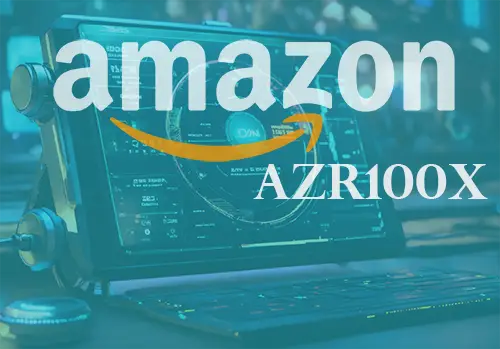Outline of the Article
- Introduction to Cryptocurrency
- Brief history of cryptocurrency
- Importance of Bitcoin
- What are Altcoins?
- Definition and purpose
- Examples of popular altcoins
- Understanding NFTs
- Explanation of NFTs
- Importance and applications
- Key Differences Between Altcoins and Bitcoin
- Technology
- Purpose
- Market behavior
- Popular Altcoins in the Market
- Ethereum
- Ripple
- Litecoin
- Emerging Trends in Altcoins
- DeFi (Decentralized Finance)
- NFT marketplaces
- Investing in Altcoins
- Factors to consider
- Risks and benefits
- The Rise of NFTs
- Cultural impact
- NFT market growth
- NFTs Beyond Art: Exploring Use Cases
- Gaming
- Music
- Real estate
- Challenges and Criticisms of Altcoins and NFTs
- Environmental concerns
- Market volatility
- Regulatory issues
- Future Outlook for Altcoins and NFTs
- Potential for growth
- Integration with traditional finance
- Conclusion
- Recap of key points
- Importance of diversifying cryptocurrency investments
Cryptocurrency Beyond Bitcoin: Exploring Altcoins and NFTs
Cryptocurrency has evolved far beyond Bitcoin since its inception. While Bitcoin remains the most well-known and valuable digital currency, there exists a diverse universe of alternative cryptocurrencies, or “altcoins,” as well as Non-Fungible Tokens (NFTs), which have gained significant attention in recent years.
Introduction to Cryptocurrency
Cryptocurrency, a digital or virtual form of currency, operates independently of a central bank and is secured by cryptography. It offers flexible transactions and has gained popularity due to its potential for financial independence and security. Bitcoin, the first cryptocurrency, was introduced in 2009 by an anonymous person or group known as Satoshi Nakamoto.
What are Altcoins?
Altcoins refer to any cryptocurrency other than Bitcoin. They serve various purposes, including improving upon Bitcoin’s technology, offering different features, or focusing on specific industries or applications. Examples of popular Altcoins include Ethereum, Ripple, and Litecoin.
Understanding NFTs
NFTs, or Non-Fungible Tokens, represent unique digital assets stored on a blockchain. Unlike cryptocurrencies like Bitcoin or Ethereum, which are fungible and interchangeable, NFTs are indivisible and cannot be replicated. They have gained traction in the art world and beyond, offering new opportunities for creators to monetize digital content.
Key Differences Between Altcoins and Bitcoin
While altcoins share similarities with Bitcoin, such as being based on blockchain technology, they often differ in terms of their underlying technology, purpose, and market behavior. For instance, Ethereum introduced smart contracts, allowing for decentralized applications to be built on its blockchain, while Ripple focuses on facilitating cross-border payments.
Popular Altcoins in the Market
Some of the most well-known Altcoins in the market include Ethereum, often regarded as the second-largest cryptocurrency by market capitalization, Ripple, known for its focus on banking and financial institutions, and Litecoin, recognized for its fast transaction times and low fees.
Emerging Trends in Altcoins
Recent trends in the Altcoin market include the rise of Decentralized Finance (DeFi), which aims to recreate traditional financial services using blockchain technology, and the growing popularity of NFT marketplaces, where digital collectibles and artwork are bought and sold.
Investing in Altcoins
Investing in Altcoins requires careful consideration of factors such as technology, team expertise, market demand, and regulatory environment. While Altcoins present opportunities for high returns, they also come with risks due to market volatility and regulatory uncertainty.
The Rise of NFTs
NFTs have captured the attention of artists, collectors, and investors alike, with multimillion-dollar sales making headlines worldwide. Beyond art, NFTs have found applications in gaming, music, and real estate, offering new ways for creators to monetize digital assets and engage with their audiences.
NFTs Beyond Art: Exploring Use Cases
NFTs are not limited to the art world; they have the potential to revolutionize various industries. In gaming, NFTs enable players to own and trade in-game assets, while in the music industry, they allow artists to tokenize their work and receive royalties directly from fans. Additionally, NFTs can represent ownership of real-world assets, such as properties or collectible items.
Challenges and Criticisms of Altcoins and NFTs
Despite their potential, altcoins and NFTs face challenges and criticisms, including concerns about their environmental impact, market volatility, and regulatory scrutiny. The energy consumption associated with cryptocurrency mining, particularly for proof-of-work blockchains like Bitcoin, has raised environmental concerns and prompted calls for more sustainable alternatives.
Future Outlook for Altcoins and NFTs
The future of Altcoins and NFTs remains promising, with continued innovation and adoption expected in the coming years. As blockchain technology matures and becomes more widely accepted, Altcoins and NFTs could play a significant role in shaping the future of finance, art, and digital ownership.
Conclusion
In conclusion, cryptocurrency has expanded far beyond Bitcoin, with Altcoins and NFTs offering diverse opportunities for investors, creators, and enthusiasts alike. While Bitcoin remains the cornerstone of the cryptocurrency market, Altcoins and NFTs represent exciting avenues for exploration and investment. By understanding the differences, trends, and challenges associated with Altcoins and NFTs, investors can make informed decisions and capitalize on this rapidly evolving landscape.
Unique FAQs
Q. Are Altcoins a good investment compared to Bitcoin?
A. Altcoins can offer higher potential returns but also come with increased risks due to market volatility and regulatory uncertainty. Investors should conduct thorough research and consider their risk tolerance before investing in Altcoins.
Q. What are some examples of NFT use cases beyond art?
A. NFTs have found applications in gaming, music, real estate, and even virtual fashion, allowing creators to tokenize various digital assets and monetize their work in new and innovative ways.
Q. How can I invest in altcoins and NFTs?
A. Investing in altcoins and NFTs typically involves using cryptocurrency exchanges to buy and trade digital assets. It’s essential to choose reputable exchanges and practice good security measures to protect your investments.
Q. What are the environmental concerns associated with cryptocurrency?
A. The energy consumption required for cryptocurrency mining, particularly for proof-of-work blockchains like Bitcoin, has raised concerns about its environmental impact. Some projects are exploring more energy-efficient alternatives, such as proof-of-stake consensus mechanisms.
Q. What role do regulations play in the altcoin and NFT markets?
A. Regulatory uncertainty can impact the valuation and adoption of altcoins and NFTs, as governments around the world grapple with how to classify and regulate these emerging technologies. Compliance with regulations is essential for projects seeking long-term viability and mainstream adoption.



